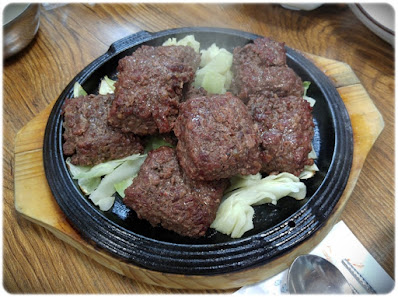□■ Tteok-galbi (Grilled Short Rib Patties) ■□
Tteok-galbi is a traditional Korean cuisine that has a rich history dating back to the royal era. The dish was originally enjoyed by kings and has since been passed down through generations, with each family adding their unique twist to the recipe.

Photo by pixabay
To prepare Tteok-galbi, beef ribs are first chopped and marinated in a mouthwatering mixture of fresh pears, garlic, honey, onions, soy sauce, pepper, and other secret ingredients. The marinated meat is then grilled to perfection over a charcoal fire, giving it a smoky flavor that will leave you craving for more.
The dish is named Tteok-galbi because the shape of the meat resembles Tteok, a traditional Korean rice cake. The dish's texture is firm yet tender, making it a satisfying meal that is perfect for any occasion. "Galbi" means "ribs" in Korean, and the dish is a popular choice for special occasions such as weddings, birthdays, and holiday celebrations.
The calorie content of Tteokgalbi can vary depending on the type of meat used and the size of the patties or meatballs. On average, a serving of Tteokgalbi (approximately 100-150 grams) can provide around 250-350 calories.
[ Tteok-galbi Calories and Nutritional Information ]
Tteok-galbi is a delicious and hearty dish that is deeply rooted in Korean culture. Its rich history, unique flavor, and beautiful presentation make it a must-try for anyone looking to experience the best of Korean cuisine.
.png)
